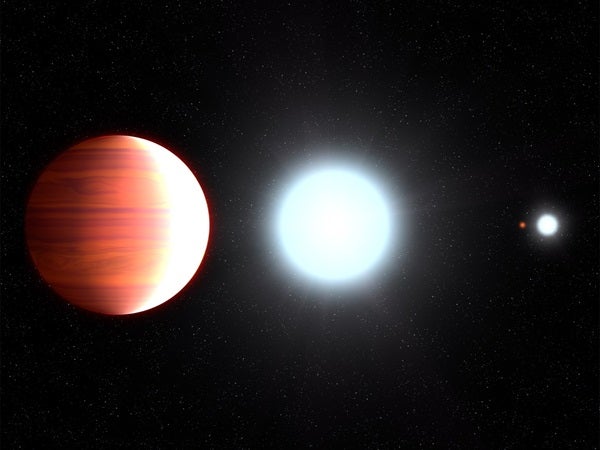Well, one, because it’s one of the hottest known exoplanets at 5,000 degrees Fahrenheit, and you’d be fried just going near it. But also because, well, that intense heat from its parent star interacts with the planet in such a way that it snows titanium oxide.
That’s the same stuff that gives you UV protection on a summer day. Powerful winds blow the chemical around the atmosphere, where it falls in flakes to its nether levels on the planet’s cooler nightside. The Hubble Space Telescope confirmed this phenomenon by taking spectra of the system during a planetary transit of its parent star.
Kepler-13Ab is an odd one. It’s got an orbital period of 1.8 days, one of the shortest of the known exoplanets, and is estimated to be about six times the mass of Jupiter and has about 1.5 times Jupiter’s radius. It’s the sole known planet in a triple star system, where two stars orbit each other and a third, smaller-mass companion orbits one of the larger stars.
This study, published in the Astronomical Journal, adds on to the growing body of research surrounding exoplanet atmospheres. The James Webb Space Telescope, set to launch in 2019, will be able to study the atmospheres of smaller planets in the habitable zone of their stars.










